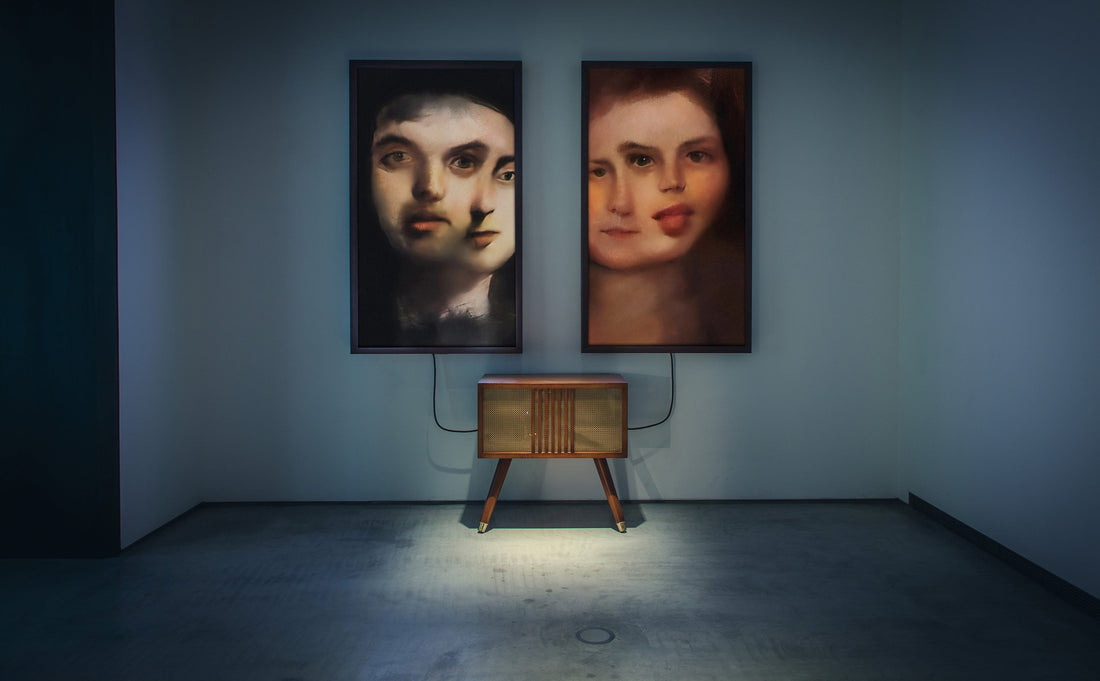Feature image: Mario Klingemann, Memories of Passersby I, 2019 via Sotheby's
Is AI the End of the Artist? The Future of Art in Question
Technology has always shaped art. From the invention of the camera to the rise of Photoshop, artists have adapted, rebelled, and embraced new tools. Today, artificial intelligence presents one of the most complicated challenges the art world has faced. AI programs can generate paintings, poems, music, and digital installations with speed and precision. This shift has led to heated debates about the future of human creativity and whether AI poses a threat to the very essence of the artist's role.

What Is AI Art?
AI art is created with the help of algorithms and machine learning. Programs like DALL-E, Midjourney, and Stable Diffusion allow users to generate images from text prompts. These platforms rely on vast datasets of existing artworks, photographs, and digital photos to create new visuals. The results often mimic the style of famous painters or blend unexpected elements in ways that a human artist might not have imagined.
Many artists have begun using these tools as collaborators. Others reject them outright, viewing AI as a shortcut that removes the artist's hand from the work.
Why AI Art Sparks Controversy
At the heart of this debate is the question of originality. Critics argue that AI scrapes existing art to produce something derivative, rather than original. This method raises legal and ethical concerns. Artists worry their work is being used without consent. Copyright law has not caught up with these technological advances. As a result, lawsuits are beginning to appear around the use of AI-generated content.
Collectors, galleries, and museums must also ask difficult questions. Is AI art collectible? Can it hold value like a painting by Rothko or a sculpture by Giacometti? Some institutions have embraced AI works as a glimpse into the future. Others remain cautious, unsure of its long-term place in the art historical canon.
AI art also forces a reconsideration of the relationship between skill and authorship. The history of art often values technical mastery, a trace of the artist’s hand, or years of refined practice. When a machine can imitate these qualities instantly, it unsettles traditional ideas about labor, intention, and craftsmanship.
Artists Who Embrace AI
Not every artist sees AI as a threat. Some view it as another medium to explore. Contemporary figures like Refik Anadol use AI as a tool to produce immersive installations. His work blends machine learning with sensory experience, creating environments that shift and evolve in real-time.
Artists have consistently found ways to harness new technologies to serve their creative visions. AI is simply the latest example. The challenge lies in how artists maintain authorship and intention when the machine becomes an active participant in the creative process.
The Role of Human Creativity
Human creativity involves instinct, emotion, and a lifetime of experience. AI can produce thousands of images in minutes, but it lacks desire, taste, and intention. While AI art may impress with its technical results, it lacks the depth of human narrative.
Artists give meaning to their work through biography, history, and cultural context. A painting by Lee Krasner carries the weight of her era, her gender, and her place in the art world. An AI image does not share that burden. It operates without personal history or emotional urgency.

What the Future Might Look Like
The art world is unlikely to face extinction from AI. Instead, it will evolve. New categories may emerge. Hybrid works will blur the line between human and machine. Some artists will reject AI entirely, doubling down on the handmade. Others will explore its possibilities with curiosity and skepticism.
Collectors may begin to value human imperfection even more. The trace of the hand, the visible mistake, the unpredictable gesture might become symbols of authenticity in a digital age. AI will likely carve its own niche, separate from the traditions of painting, sculpture, and drawing.
Technology will continue to reshape not only how art is made but how it is seen, sold, and preserved. As new generations grow up alongside AI, their relationship to art may differ dramatically from previous ideas of originality and genius.
Institutions and AI
Major museums and galleries already grapple with how to show and explain AI-generated art. The Museum of Modern Art and the Whitney Museum have included AI works in exhibitions, treating them as cultural artifacts rather than traditional artworks.
Institutions must decide how to archive, preserve, and present these works. Unlike a painting, a digital file depends on technology that might become obsolete. This adds another layer of complexity to the debate.
Final Thoughts
AI art raises important questions about the future of creativity, authorship, and the role of technology in human expression. It challenges the notion of what it means to be an artist. For some, this is a threat. For others, it is an invitation to expand the definition of art itself.
The future will not replace artists with machines. It will demand that artists think more deeply about what only they can do. AI will push artists to clarify their value, their purpose, and their unique place in a changing world.
The debate over AI art reflects larger anxieties about technology and humanity. These questions will not disappear soon. They will continue to shape conversations about art, creativity, and innovation for years to come.
©ArtRKL® LLC 2021-2025. All rights reserved. This material may not be published, broadcast, rewritten or redistributed. ArtRKL® and its underscore design indicate trademarks of ArtRKL® LLC and its subsidiaries.





